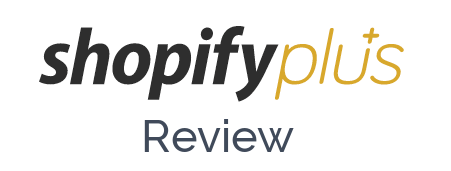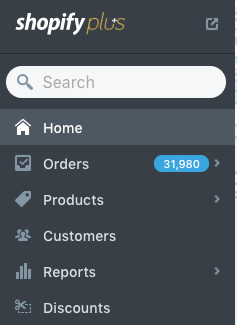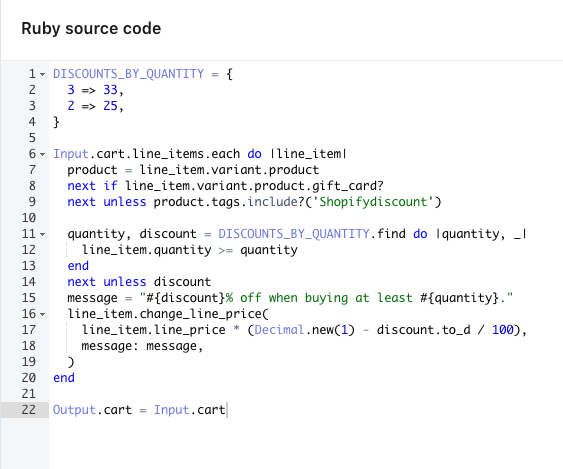Liquify are official Shopify Experts & Partners since 2014. If you follow a link to Shopify from our website and make a subsequent purchase this may result in a commission at no extra cost to you. Our opinions remain our own.
Shopify Plus Review – An enterprise class ecommerce solution for 2018 andbeyond.
In this article we’ll take a look at Shopify Plus as an enterprise class ecommerce solution. If you’re running a multi-million $/£/€ ecommerce store (or plan on running one) you’ll soon discover that there are only a few existing SAAS platforms in the world which will scale with your business. Shopify Plus is one of them.
Our objective here is to help you decide whether Shopify Plus is the right platform of choice for your ecommerce store or not and to sum up the main advantages, costs and disadvantages as well as to compare it to other ecommerce solutions on the market – like Magento or a bespoke platform.
It’s written from a web design agency perspective – one that specialises in eCommerce. We’ll cover some of the important things we’ve discovered first hand whilst working on real sites using Shopify Plus – things you simply won’t find out until you start building and maintaining stores on the platform.
We are official Shopify experts and have a portfolio of clients using Shopify, Magento, Woocommerce and other ecommerce platforms. We’ve helped clients on just about every ecommerce platform in the world at one stage or another. So we are in a pretty solid position for advising on the main advantages/disadvantages of Shopify Plus and it’s suitability when compared to other SAAS platforms.
If you’ve got any questions about Shopify Plus which aren’t covered in the article or would like to speak with a Shopify Plus Expert – you can contact us and one of our team will get back to you within 24 hours.
And if you want – you can simply sign up for a free trial of Shopify Plus here:
What is Shopify Plus and how does it differ from Regular Shopify?
Let’s start with Shopify and deal with Shopify Plus after.
Shopify is one of the major eCommerce platforms in the world. If you’re already running an eCommerce store you will have probably already have heard of it. If you’re just starting out you need to know about it.
Shopify is a hosted ecommerce SAAS solution. That means Shopify provides and maintains the host and the software required to run an online store. You can also get a physical point of sale or card reader with Shopify and sync the whole show up through your online store. So Shopify allows you to sell online, in store and on the go. And more recently – on Amazon and other platforms.
Shopify powers around a quarter of all eCommerce sites in the world and is used by many major brands including Tesla Motors, The New York Stock Exchange and Budweiser Beer (just to name a few). It’s a solid SAAS platform and some of our Shopify clients have gone on to make multi-million pound sales in the first year of trading.
In the eCommerce world Shopify is growing faster than any other SAAS platform. This is mainly because the legacy platforms are failing to innovate. The retail giant Amazon even caved into Shopify in 2015 by closing its own eCommerce arm of the business (Amazon Webstores) and suggesting Shopify as a migration destination.
Amazon have got very deep pockets and are prepared to fund businesses at a loss for a long time (Amazon has been in business for 20 years and still rarely makes a profit). They didn’t see the point in competing with Shopify – instead they suggested Shopify as a migration platform and worked on an integration with Shopify stores to allow Shopify/Amazon integration. If that wasn’t a vote of confidence in the platform I don’t know what is.
Shopify has a number of plans each with different benefits/features/support and pricing structure. There are four main plans with Shopify:
- Basic – for stores starting out (e.g. annual turnover under $10k.)
- Shopify – for stores with some sales (e.g. annual turnover between $10k and $50k)
- Shopify Advanced – for small stores with growing sales (e.g. annual turnover between $50k and $250k)
- Shopify Plus – for big stores with solid sales and growth plans (e.g. annual turnover over $250k)
Shopify Plus is the top most plan available with Shopify and is designed for enterprise class stores with high volumes of customers and transactions. It’s not for small customers. It’s a solution for stores which have (or plan to have) higher levels of customers and transactions. We’re talking about big stores that plan on getting bigger. If that is you then read on.
What are the main Advantages of Shopify Plus?
Shopify Plus has many advantages over other platforms as well as the lower Shopify plans. These are the main benefits we think that makes Plus stand out as an enterprise class ecommerce solution:
Shopify is a fully hosted solution – which means that you don’t need to worry about server maintenance or uptime (like you do with Magento or OpenCart or Woocommerce). If the prospect of server maintenance doesn’t worry you then you’re not going to get very far trading online. Server downtime and maintenance is very costly for two reasons: lost sales and staff costs (you need to pay the people who actually do the maintenance). The Shopify Plus servers are fully managed by Shopify and their partners Fastly and have an uptime of 99.99%. You will simply not get that level of uptime whilst maintaining your own server. 1% downtime is enough to cripple some businesses – in busy trading seasons like Christmas. And trust me – if your server is going to go down it will do so when you are at your busiest – losing you lots of money.
The Shopify Plus servers are blazing fast and can handle seriously high levels of traffic without outages. We simply can’t fault the speed and reliability of the servers with the Shopify Plus Plan and have seen our client’s stores handle high volume transactions effortlessly. We’re talking heavy daily traffic including sales and seasonal spikes. If you’re planning flash sales or big promotions then you absolutely need to know that your server won’t go down. Shopify Plus scales up to the challenge and handles traffic spikes smoothly and it also has some pretty cool DDOS protection too (so that people don’t attack your website in the hope of bringing it down).
Shopify is PCI Level 1 compliant – out of the box. That last sentence is probably the dealmaker for the experienced eCommerce traders amongst us. For anyone who is new to eCommerce and online sales, there is a monster headache waiting out there waiting to ruin your day and it’s called PCI compliance. You basically can’t accept credit and debit cards on your own website without being PCI compliant (well, there is a way using a few embedded gateways but this comes with limitations on design). PCI compliance ensures that credit/debit card data is captured, stored and transferred in a secure way. And the rules around it are seriously strict. It’s a hugely expensive and time consuming process for people who maintain their own servers. Shopify has a PCI level 1 compliant checkout. Job done. You’re PCI compliant before you’ve even thought about it.
The Shopify platform itself is evolving whilst others are standing still. Right now we are seeing stagnation on some platforms (Volusion and Open Cart). Shopify is moving on and constantly adding new features. We love some of the new apps available for Shopify and theme developers are flocking to the platform. It’s a growing community.
Shopify has some awesome API’s – readily available – which makes the platform super flexible and developer friendly. And Shopify Plus customers have access to an additional API called Scripts which allows developers to create custom applications with Ruby. Developers – read more about Shopify Scripts.
All Shopify stores have API access. However the API limits are much higher for Shopify Plus when compared to lower Shopify plans. In short – this means that when your store is integrated with other services then real-time data can be transferred from the store to the third party much quicker. We found this higher API limit really useful recently when we created a custom app for a Shopify Plus client who wanted to generate Google Shopping feeds in multiple currencies. If that client had a lower Shopify plan then their prices/stock may have been out of date when the ads ran which could have led to a temporary and expensive ban on ads from Google.
The checkout experience with most Shopify plans is often a point of criticism. In order to maintain PCI compliance Shopify must limit access to the code on the checkout. Limited code means limited customisations. On lower plans – store owners are allowed to simply add a logo and some custom colors and developers are not allowed to add anything other than conversion tracking scripts. However with Shopify Plus – the checkout is highly customisable and can be totally branded. On Plus you can’t completely control the Shopify checkout experience and add whatever code you want (because of PCI compliance there are still some limitations here – we do need to work within the checkout steps framework) but with Shopify Plus you can brand the checkout experience for the customer and style it as you want. You can also keep the customer on your main domain without sending them to Shopify’s domain for the transaction (which you must do if using a lower plan). So Shopify Plus gives you the advantage of a branded checkout experience on your own domain (which is also PCI compliant).
Shopify Plus Gives you Advanced fraud detection and reporting – allowing you to reduce risks and understand your customers better without exporting data to third party platforms. This means less time messing around.
Shopify Plus plans allow you to have multiple clones of the store for multiple currencies/languages without paying for any more Shopify plans. That means that for one fixed price per month you can have up to 11 Shopify Plus stores. These stores can be on subdomains or country-specific domains and you only pay for the first Plus plan. Whereas with lower plans you must pay for a new plan for each store (volume discounts are available though). Some people see this as a disadvantage so we’ll also be including this there.
What are the Main Disadvantages of Shopify Plus?
It’s hard to discover the disadvantages of Shopify Plus until you’ve got your hands dirty and developed/designed some stores using the platform. These are the main disadvantages we’ve found by building and maintaining Shopify Plus stores for our clients:
Whilst the frontend (the website which customers see) is completely customisable with Shopify Plus – the backend (the bit you use to manage the store) isn’t. This isn’t a problem for the vast majority of merchants but for some it really is a big problem. You basically need to use apps to extend the core functionality and this can add some additional complexity/documentation when you have atypical products/integrations. Everything is possible within Shopify’s backend but the processes you as a store manager might take aren’t as streamlined as they could be if the backend was customisable. It’s a rigid back end. Like I said – not a problem for most merchants but for some it can be frustrating. Specific examples include products which require a high level of customisation, personalisation or with huge numbers of variants/component tracking.
You can’t have more than one hundred variants per products. There are some workarounds here but generally speaking Shopify products all have a hard limit of 100 variants when tracking SKU’s/stock. This is not a problem for many clients (who have products in a limited range of sizes/colors) but can be a major headache when you want to sell things like paint (which always has hundreds of colors/finishes) and track stock. We actually find that for SEO it’s better to split products with hundreds of variants up though.
The checkout experience is not completely 100% customisable and many people get confused on this when moving up from Shopify Advanced to Shopify Plus. Shopify have basically sold the Plus package at the start as a completely customisable solution at the checkout level but the reality is that there are some hard limitations to what developers can do in the checkout. This is all to do with PCI compliance. I must say – this is only a problem for merchants who have no idea of the complexities involved in maintaining a PCI compliant checkout process. The checkout with a Shopify Plus plan can be heavily customised (visually) whilst remaining PCI compliant. So it’s a solution really and not a problem (but worth mentioning as some people are surprised when we tell them we can’t modify certain code in the checkout). The checkout process with Shopify is pretty well thought out and research shows that single step ecommerce stores don’t convert any better.
If you’re running a multi-lingual/currency store with Shopify then you need to manage multiple stores instead of one. Whilst with Magento you can have a single store with multiple languages and currency checkout – Shopify doesn’t handle multi-anything very well (like many things built in north America). To have a genuine multi-currency/language store with Shopify (which allows checkout in multiple currencies) you need to clone stores to subdomains and have a different checkout/currency for each. On the upside this does make accounting/regional pricing/Google Shopping ads easier. Some people would rather manage all stores/sales from one dashboard but I’m yet to see anyone doing this without big maintenance issues to be honest (Magento will handle this).
Shopify doesn’t handle VAT very well natively. Shopify was built in Canada and VAT was an afterthought. If you read around about Shopify you’ll find a lot of people in Europe moaning about a specific issue where they need to display prices including VAT but not charge VAT to non EU customers and this is a problem for them. VAT is not an issue on Shopify if you know what you are doing – we can show prices with or without VAT and we can display a breakdown in the cart/checkout. However if you’re looking to sell both in and outside of the EU you need have 2 stores – that’s the solution to the VAT issue.
What are the features of Shopify Plus?
Shopify Plus has all the regular features of Shopify which are covered in great detail here. Since Shopify is a dedicated ecommerce platform which has been around for a while you’ll find that it offers everything you need to start and run an online store. In addition to the regular Shopify features the Plus Plan offers:
- Advanced Fraud detection
- Advanced reporting
- Up to 10 additional free clones of your website (to serve additional languages/currencies) without the need for another plan
- Bot protection
- Real-time carrier shipping
- Customisable checkout experience on your own domain (PCI level 1 compliant cart)
- Shopify scripts and the scripts editor app
- Dedicated success manager
- Super fast hosting with 99.99% uptime guarantee.
How many people use Shopify Plus?
We couldn’t get any exact numbers on Shopify Plus merchants but the whole Shopify platform has over 377,500 merchants. A guess would be that there are tens of thousands of merchants using Plus with Shopify. Current Shopify Plus customers include Reddit, Wikipedia, Tesla and the WWF as well as our own clients: Urban Excess and GreenGurus.
Who should use Shopify Plus?
Shopify Plus is suitable for online stores which either already have an established customer base (and are migrating to Shopify) or who plan on having a large customer base within the next 12 months. We’re talking 6 or 7 figure annual sales here. It really is a platform for established businesses or accelerated startups. Most smaller to medium sized businesses are better off with either the Shopify Advanced or Shopify Plan because it is more expensive. Many people start off on one of the smaller plans and scale up when the time is right. A point comes when Shopify Plus just makes sense.
How much does Shopify Plus Cost?
Update: June 2017 – please see our updated article on Shopify Plus costs/price.
There are no fixed published prices but Shopify Plus will currently cost you a minimum of $2,000 per month. That is the fee for the server, Shopify’s software, SSL and support.
Since we’re Shopify Partners – you can contact us and we’ll see what price we can get for you – at the least we will be able to get you a free trial extended for a few months for development.
It’s a slightly complex cost calculation. And we’ve written a full article on Shopify Plus costs here.
Going with the fee of $2,000/month – that works out at around $70/day for running an enterprise class store. The only other additional fees you’ll have are from your payment gateway provider. If you use any commercial apps from the app store then these will be paid for on a monthly basis.
If you’re running a multi-currency/lingual store then you can have up to 10 additional clones of your store for no additional cost using Shopify Plus.
Many merchants who move up from Shopify Advanced will actually save money on Plus as they will need to pay transaction fees of 0.5% on the Advanced plan unless they are using Shopify Payments as the payment gateway (not available in all countries). Plus merchants can also have up to 10 additional clones of the main site in different languages or currencies. Those on the Advanced package must pay for the next plan down for each clone.
E.g. a merchant who requires their store to have 5 languages/currencies and has monthly sales of $100,000 would pay on the different plans:
Shopify Plus – $2000/month + 0% transaction fees
Shopify Advanced – $299/month for the first store + $316/month for the other 4 stores ($79 x 4) + 0.5% transaction fee ($500) if using a 3rd party gateway. Total = $1,115/month.
A merchant who requires their store to have one language with monthly sales of $10,000 would pay on the different plans:
Shopify Plus – $2000/month for Shopify Plus + 0% transaction fees = $2,000/month
Shopify Advanced – $299 + $50 (0.5% of $10,000) = $349/month
A merchant who requires their store to have one language with monthly sales of $1,000,000 would pay on the different plans:
Shopify Plus – $2000/month + 0% transaction fees
Shopify Advanced – $299 + $5,000 (0.5% of $1,000,000) = $5,299
As you can see – the maths very much depends on your gateway and whether or not you are selling internationally in multiple currencies and languages and your volume of sales. It becomes cheaper than the lower plans when you reach a certain level of sales. If you would like us to calculate your approximate costs then please contact us.
How Does Shopify Plus compare to Regular Shopify Plans in terms of fees?
Shopify Plus makes financial sense once you hit a certain volume of sales with a lower Shopify plan or if you plan on hitting a certain sales point within 12 months. This sales point will depend on your chosen payment gateway and whether you’re selling internationally with multiple stores.
The other Shopify plans have transaction fees unless you’re using Shopify Payments as the gateway. Shopify Plus has no transaction fees regardless of the gateway but charges a higher fixed monthly fee.
So at a certain volume of sales it makes financial sense to switch to Plus and you’ll actually save money. If you would like help calculating whether Shopify Plus could save you money then please contact us.
How Shopify Plus has Helped eCommerce Merchants Actually Save Money
I think the main cost benefit of Shopify Plus is actually in reduced staff costs when moving away from the legacy platforms like Magento. Running an international eCommerce store and maintaining your own server would does an inhouse team. At the very least you’d need a full-time developer who was available in emergencies and for routine server maintenance and updates. If you’re in most western countries you won’t get a decent ecommerce developer for less than $75k per year who was willing to do out of hours updates.
We always say to clients with Magento stores that they need an inhouse developer. Whereas clients with Shopify stores don’t. They can just hire as required.
So long as you find yourself a reliable Shopify expert then you don’t need a full time developer with Shopify Plus. You also don’t need to think about PCI compliance. Those two things alone will probably set you back $100k a year and that’s before you’ve even paid for your hosting or lost sales due to downtime.
Is Shopify Plus better than Magento, Woocommerce, EKM Powershops, Volusion, Bigcommerce etc.
This is a tricky one to answer and will very much depend on your business needs. In short:
Magento is a much more flexible platform in the back-end than Shopify. If you need a high level of back-end customization (which some people do) Magento is a better choice. But with flexibility comes expense, server maintenance and security nightmares. I’d say that for 95% of merchants – Shopify Plus is a “better” solution simply because of security and servers. Many merchants may even be better off with a bespoke platform rather than Magento. If you’re looking at enterprise class solutions there are so many things to consider – and a lot will depend very much on you as a business and you will need to talk through your needs in detail with a few ecommerce experts.
Woocommerce/Opencart are both highly insecure and unprofessional solutions. We won’t spend time discussing them here. Move on.
Volusion has failed to innovate and change with the market. It’s a bit 1998 in our opinion.
Bigcommerce is okay for the smaller to medium sized merchant but the platform doesn’t cater to larger stores. Scaling with this platform will be difficult. Also they seem to be chasing the market rather than defining it.
So in 2017 an enterprise class eCommerce site has a choice of Shopify Plus, Magento or a bespoke platform.
Magento will come with much higher ongoing and startup costs. Magento will enable you to have a single multi-currency/language store but you may need to think about PCI compliance (depending on gateway setup).
A custom platform will definitely require an in-house team and very deep pockets. I know of one ecommerce client who has three full time developers just for security alone on their bespoke platform.
Is Shopify Plus Scalable?
Yes, absolutely. It’s an SAAS plan built for big brands. Shopify Plus is already hosting huge online stores by the likes of Google, Reddit, Wikipedia, Tesla and the WWF. That’s about as big as it gets.
Can Shopify Plus Servers Manage High Volumes of Customers?
Yes and I’ve seen it multiple times with our own clients. Each store can process up to 8,000 orders a minute!
How fast Exactly are Shopify Plus Servers?
Shopify Plus uses the Fastly CDN and has over 7,000+ cores. The servers are about as fast as you can get. Shopify’s servers have never had an outage on Black Friday which is the biggest trading day of the year.
A CDN ensures global speed which is very important for international stores. We’ve found the server speed to be awesome in North America and Europe but it does drop off a bit in Australia (where it is more like acceptable than blazing fast). This is a general problem in Australia though – the country just doesn’t have the best servers/infrastructure. Your store will only be as fast as your theme though and a badly coded website can easily put an end to server speed.
One issue we find with Shopify stores/servers is that many store owners (even large ones) install too many apps in the hope of improving performance in other areas. Since many apps use 3rd party servers then there can be issues with speed/loading here if the third party host has an issue.
Is Shopify Plus a Flexible Enough eCommerce Solution for My Business?
Shopify Plus is a very flexible eCommerce solution. 99% of merchants find that there is an existing commercial app for any additional functionality outside of the core platform. For the 1% who need additional functionality – custom apps can be developed by Shopify experts such as ourselves. Custom apps cost upwards of $5,000 and need to be hosted on a secondary server.
It must be noted that Shopify does have some hard limits in the back end but most merchants are fine with this and manage to work with it. Like I said – apps can be used to extend the core functionality of the platform and more apps are being added/developed all the time.
Can I Get A Custom Store Developed on Shopify Plus or do I need to use an existing Template design?
Absolutely you can get a custom design. We design and develop custom Shopify themes for clients all the time including Plus clients. You can use an existing theme/template if you want but most clients operating at the Plus level will be looking for a bespoke theme/design.
There’s no limit to the front-end work which can be done on a Shopify Plus store aside from the mentioned minor limitations at the checkout already discussed.
Is it easy to migrate to Shopify Plus from other platforms such as Magento, Volusion etc?
Yes. Super easy. Talk to us – we can help get you a quote and roadmap for migration.
I’d like to move my store from Magento to Shopify Plus – how much will it Cost?
This will very much depend on the complexity of your store. If you contact us we’d be happy to give a quote based on your existing store. Custom Shopify themes cost upwards of $10k and take upwards of 6 weeks to complete depending on our workload.
How much does Shopify Plus Cost?
We’ve explained in great detail how much Shopify Plus Costs in this article. It requires a small calculation. In short Shopify Plus will cost you upwards of $2,000 per month.
Can I have a multi-lingual Store with Shopify Plus?
Yes you can. But it’s not one single store you’ll have – it’s multiple clones of the same store. One store for each language. There is a possibility to use an app for multiple languages on one store but it’s genuinely terrible for SEO to do this. If you’re an enterprise class merchant you’ll need one store for each language or currency.
Each Shopify Plus plan can have up to 10 additional stores without the need to pay for another plan.
Can I have a multi-currency store with Shopify Plus?
Each Shopify store can only have one checkout currency. There are two options with multiple currencies and Shopify stores:
Solution 1 – prices can be displayed in multiple currencies on the front end but the customers will always be paying at the checkout in the store base currency. Whilst this makes accounting easy it’s not so good for conversions and many merchants are looking to allow customers to pay in their home currency. Fine for smaller businesses but not so for larger businesses.
Solution 2 – Here we need to clone the original store and setup new ones with different currency/languages. Users can be redirected between the stores using a geolocation API. It’s great for SEO & conversions and so long as things are setup properly you won’t have a problem.
Can I completely customise the checkout process with Shopify Plus?
In short – yes and no. We can add custom CSS (cascading style sheets) for improving the design of the checkout pages. But the structure of the checkout is rigid in the sense that the user must follow certain predefined steps (which actually make sense and are very well thought out). There are limits to the design/functionality at the checkout level but it is a PCI level compliant checkout.
With Shopify Plus – can the Customer Stay on the main store Domain during Checkout or do they need to go onto Shopify’s Domain?
Yes – Shopify Plus is the only Shopify plan which allow your customer to stay on your domain during checkout. All other plans will go to Shopify’s domain for checkout. Once again this is all to do with PCI compliance and security.
What Payment Gateways Does Shopify Plus Support?
The payment gateways available on Shopify Plus are the same as on all other Shopify plans. Integrations are available for all the major payment gateways plus some minor gateways. Integrations available will depend on your business country location. View gateways here.
Many people find that when they move to Shopify Plus that they also move gateways as on lower plans they are often limited to Shopify Payments (since it comes with zero fees). Since with Shopify Plus there are no additional gateway fees – you are then free to choose the gateway with the most competitive fees.
Choosing a suitable gateway is usually a quick and painless process with Shopify and changing is very easy so long as there is an integration.
How much will Maintenance cost for a Shopify Plus Store?
You won’t need to pay any additional fees for server maintenance. But you will need a Shopify Expert on hand to help with design changes, store backups and additional functionality. Rates vary but expect to pay either hourly rates ($50-$150) for a qualified Shopify Expert. We’re mid-range and our prices are currently $65/hour and we offer reduced rates for monthly retainers (starting at $600/month for 10 hours per month).
What Kind of Support do I Get with Shopify Plus?
From Shopify themselves you’ll get access to their Plus support team and a dedicated success manager. We haven’t had huge experiences with the Plus support team because we know the platform well enough to solve any problems and give advice. But we do know that usual response rates from Shopify are quick and friendly.
As with all services like this there are levels of support. As a plus client you’ll be talking with much more experienced people within the Shopify team.
If you’re a Plus client you should partner up with a reliable Shopify expert as you’ll often find you can get them on the phone and get instant answers and solutions (Shopify themselves usually won’t touch the code on your site).
I’d Like More Information About Shopify Plus
Just talk to us – we’re happy to talk through your needs and discuss the best options.
I’d like a quote for a Shopify Plus Design or Development Project or a Migration to Shopify Plus
You’ll probably want to talk to quite a few Shopify experts in order to get a quote and timeframe. Expect to pay upwards of $10k for a custom theme (store design) although you can also use a purchased theme to save costs if desired. contact us with full details about your project and we should be able to give you a quote and timeframe for delivery.
I’d Like to Preview the Shopify Plus Platform
Just contact us and we’ll arrange a walkthrough on Skype or share temporary login details for a Plus store. You can’t just access Plus usually without paying the monthly fees but we have development stores open for testing.
Can I upgrade to Shopify Plus?
Yes – many people find they start off on a lower Shopify plan and then move up to Plus. It’s not as simple as one click to upgrade though and an experienced Shopify developer should be hired to customise the checkout etc.
I’d like to try Shopify Plus
Final Review Roundup of Shopify Plus Review for 2018 and Beyond
Shopify Plus has many advantages & disadvantages as discussed in the review. The main advantages of Shopify Plus include platform uptime of 99.97%, multiple API’s and a highly active designer/developer community. The only main downside to the Shopify Plus platform is the fact that you can’t have a multi-currency checkout but this can be solved at no extra cost by cloning a Shopify Plus store to a subdomain and geo-localizing it.




















